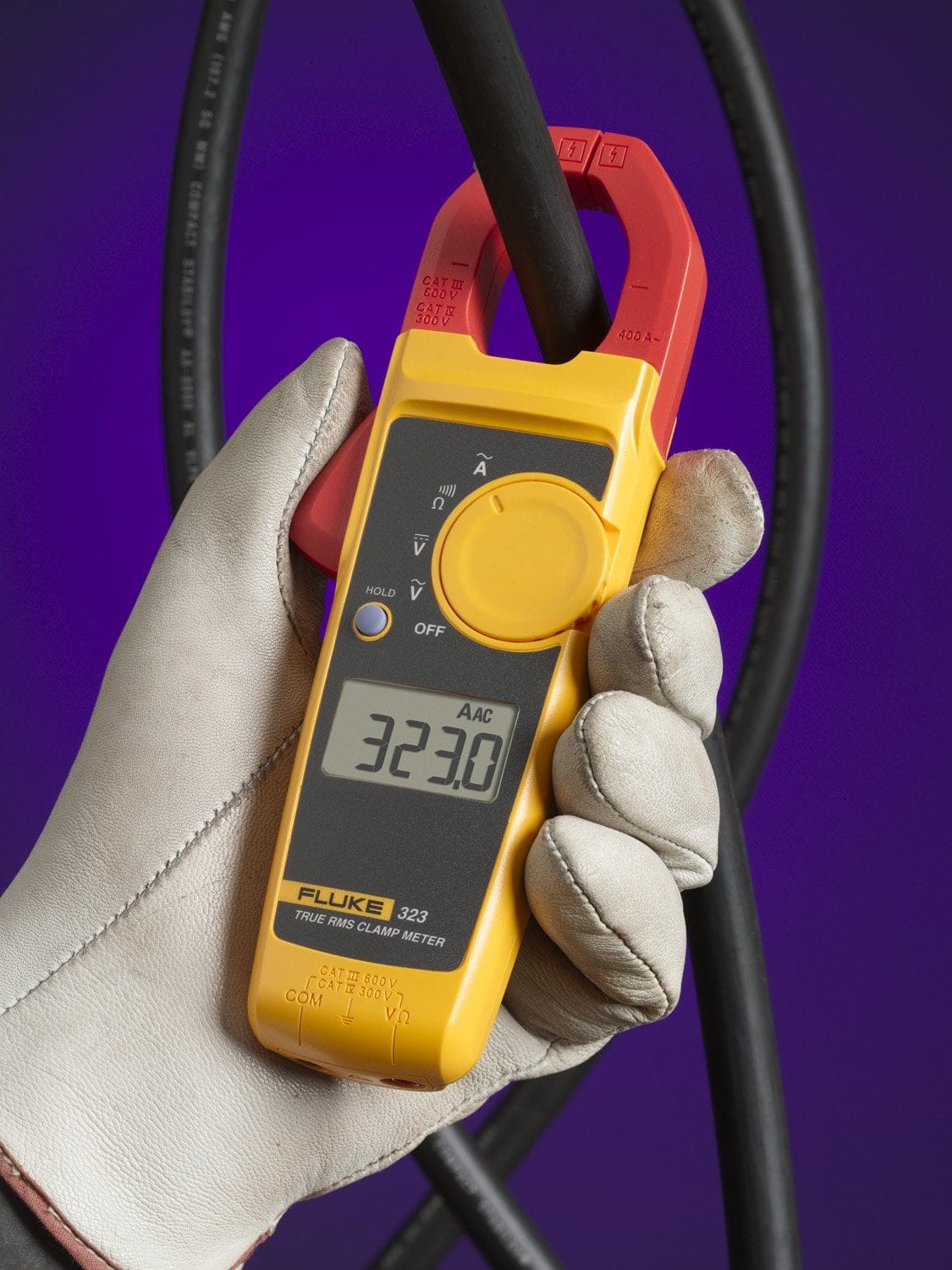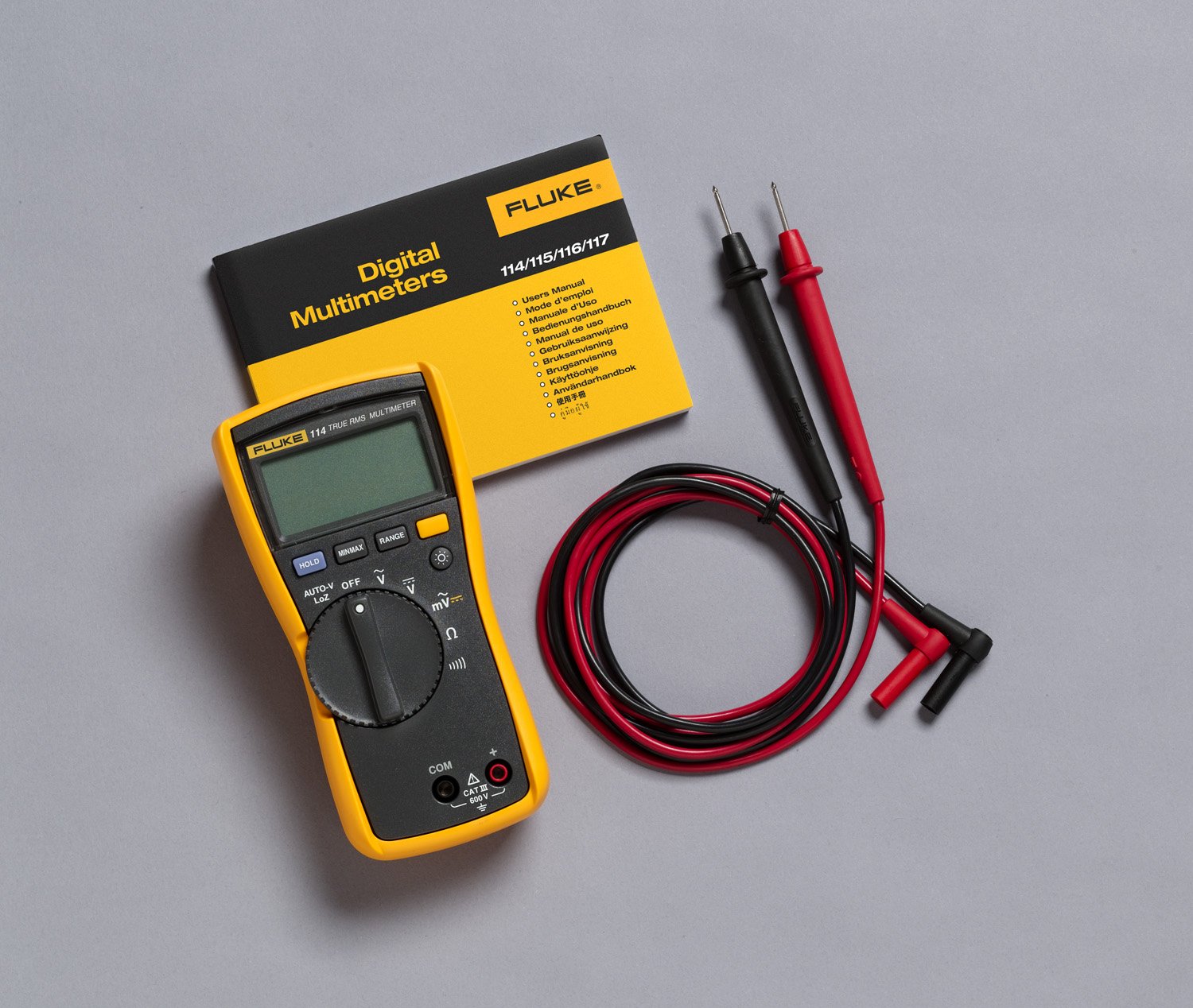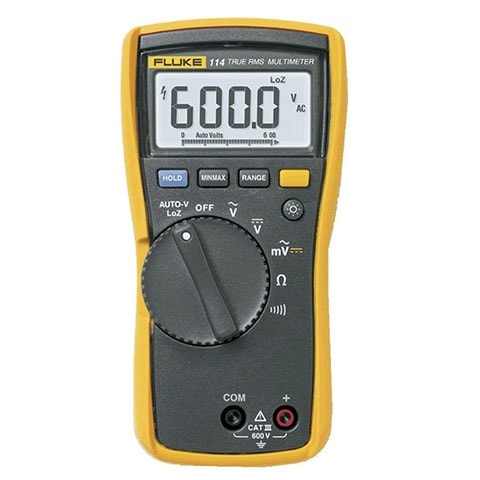Clamp Meter vs Multimeter – Which is Best for Your Needs?
-
Pete Ortiz
- Last updated:
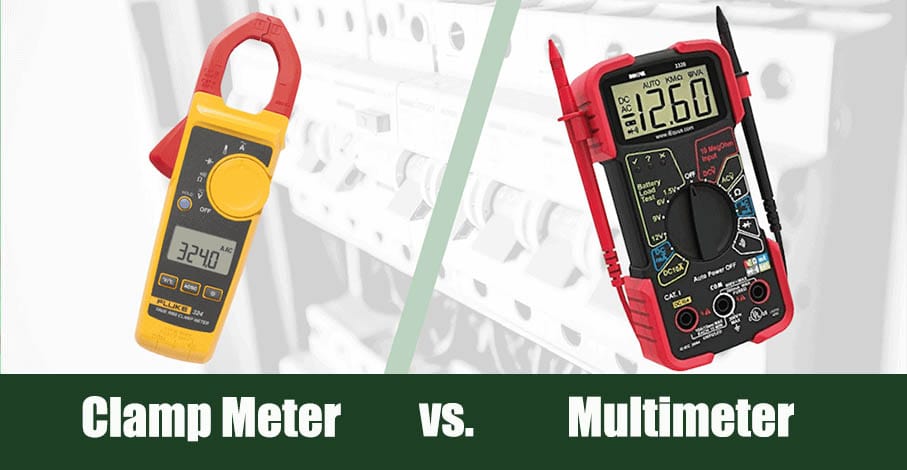
Clamp meters and multimeters both test different electrical measurements. This can make it hard to know which to choose, especially if you are new to electrical work. In short, a clamp meter measures currents, while a multimeter measures resistance and continuity as well.
Still, it can be challenging to know which option to get, so we have written this article. We provide you with an overview of both meter types and advice to know which one to get. In the end, we also offer you recommendations for our favorite clamp meter and multimeter.
Overview of Clamp Meter
A clamp meter is an electrical device that tests for electrical faults and measures currents. Depending on the model you get, you might be able to find a clamp meter that makes a variety of electrical measurements, but the basic purpose of a clamp meter is to measure current.
More advanced options can test things like continuity, capacitance, and frequency. Obviously, these models will be more expensive than the basic clamp meter. Even though these expensive models can test more measurements than the basic ones, they are not as accurate as the multimeter.
General use that requires less accuracy is best for the clamp meter. Similarly, those who are not familiar with working with electrical currents might opt for the clamp meter because it is the two’s safer option. Overall, the clamp meter is a great tool for testing current when accuracy is not as important.
Design
The clamp meter is a handheld device. It has a body with sensors at the end that clamps around the wire. This sensor is what measures the current or amperage of the electronic wire.
The design of the clamp meter looks very similar to the multimeter. The only difference is the clamp at the end. This makes this device very easy to use and highly portable. It takes up very little space and only requires one hand for use.
Though it might seem unbelievable that this device can measure the current within, it uses our general understanding of electromagnetism to measure the current.
Safety
Since clamp meters do not actually touch the electric currents, they are incredibly safe to use. You simply put them on the outside of the insulated wire. This reduces the chance of getting electrocuted dramatically.
Measurement and Accuracy
Most clamp meters measure currents of up to 10A. You will run the risk of blowing out an internal fuse if you go above that level. More expensive models, however, may come with plug-in accessories that allow you to measure bigger amps.
As for accuracy, the clamp meter does not offer the same accuracy as the multimeter. Since the device never touches the actual current, it cannot be as accurate. Still, the results are accurate enough for general use.
Best For
The increased safety features and the clamp meter’s decreased accuracy are best for general testing current. They’re great for around the home use or quick testing. Like professional work, anything that requires exact results might require something more precise than a clamp meter.
Price
Most clamp meters and multimeters cost about the same, although the multimeter sometimes costs a bit more simply because of its more accurate results and increased measurements. The more accurate device you get, the more money you should expect to pay.
- Easy to use
- Safe
- Affordable
- Not as precise as the multimeter
- Primarily only used for measuring current
Overview of Multimeter
A multimeter provides more accurate results for a variety of measurements. It can record voltage, ohms, and amperes, but some more modern options can measure down to the millivolts, milliohm, and milliampere. This allows the multimeter to offer precise measurements that are great for increased accuracy and professional use.
Although this tool is less safe than the clamp meter, professionals and those interested in exact results should consider the multimeter over the clamp meter.
Design
The multimeter is also a handheld device. You hold it in one hand while you test the measurements of the electrical wire. It has two wires that you will place directly on the circuit that you are measuring. Unlike the clamp meter, it does not have any clamps at the end. It normally is just a rectangle shape.
Generally, there are two types of multimeters, analog and digital. Analog meters are less expensive but less accurate. In contrast, digital multimeters offer precise measurements and more tests than the analog model, but it is more expensive.
Safety
Of course, a multimeter is less safe than a clamp meter due to how you must directly connect the wires to the electrical current. This increases your chance of electrocution and injury. For this reason, you need to be completely safe and careful when using this tool. It can be incredibly dangerous.
Those not familiar with how to handle electrical wires and currents should use caution when using this tool.
Measurement and Accuracy
As we’ve already mentioned, the multimeter provides highly accurate voltage, ohms, and amperes measurements. It can become more precise by measuring the millivolt, milliohm, and milliampere in more modern designs.
High-end multimeters especially measure more accurately than plant meters. They also test more in general. These multimeters can test temperature, inductance, capacitance, frequency, relative humidity, and acidity. This makes them highly versatile and useful for a variety of uses.
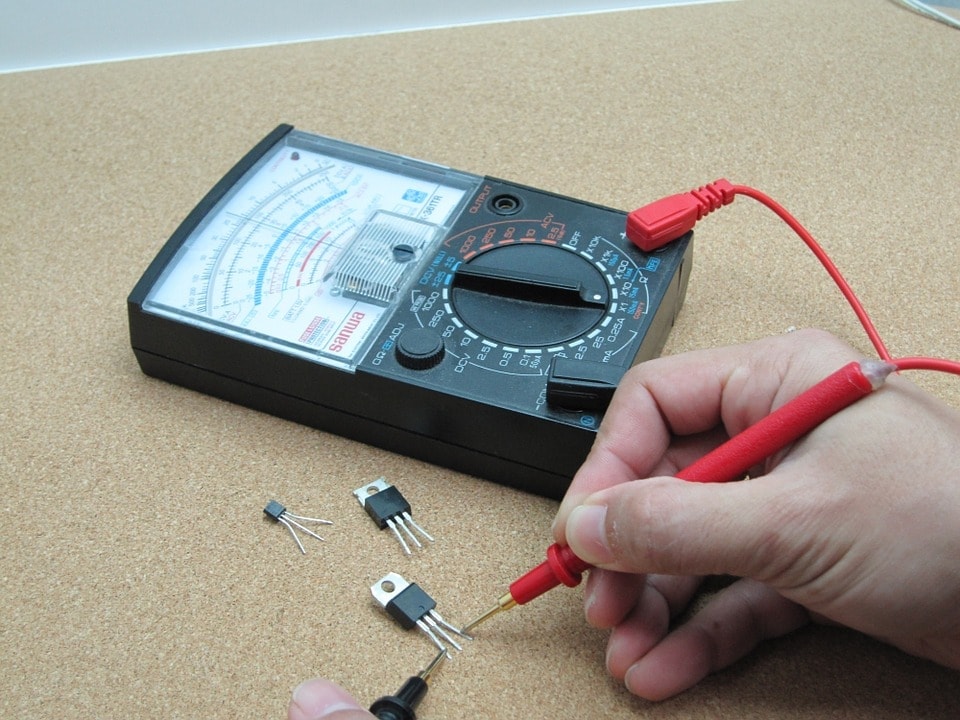
Best For
Multimeters are best for when you need a variety of tests that offer precise results. Electricians and other professionals should certainly invest in a multimeter since they will need to test a variety of current features regularly.
Those who plan to just test currents around the house might want to use caution with this tool simply because it is more dangerous than the clamp meter.
Price
Since multimeters are more accurate and test more measurements, they tend to be a little bit more expensive than clamp meters, though not by a lot. However, if you get a high-end digital model, you can expect to pay a good bit of money for it.
- Easy to use
- Highly accurate
- Tests a variety of measurements
- Less safe
- More expensive
When to Choose a Clamp Meter vs Multimeter
| Meter Type | Best For |
| Basic Digital Multimeter | Basic voltage and continuity measurements |
| High-end Digital Multimeter | Power quality work that requires high resolution and advanced features |
| Basic Clamp Meter | Basic current measurements |
| High-end Clamp Meter | Intermittent breaker trips |
Neither the clamp meter nor the multimeter is inherently better than the other, but there are definitely times when you should choose one model over the other. In short, you will select the meter based on your intended use and needed accuracy levels.
Clamp
If you are looking for basic current measurements and don’t care about exact accuracy, you should select a clamp meter. You might also want to choose a clamp meter if you are scared of being electrocuted.
Below is a list of times you should use a clamp meter:
- Measure current without breaking the circuit
- Troubleshooting current in-situ
- Dual-purpose measurement
- Machine speed and current drawn
Multimeter
In contrast, select a multimeter if you need to test voltage, continuity, and more features not found with the clamp meter. It is also a better option for those who need more accurate results.
Below are examples of when you will choose a multimeter:
- More measurement criteria
- Voltage, capacitance, and frequency
- Higher resolution measurements
- Electronic works
Modern Appliances
Historically, clamp meters and multimeters were two separate devices, but more modern appliances somewhat blur the line between the two tools. If you think you need both, it may be well worth your time to look for a modern tool that provides the capacity of both. Although these modern tools will be less accurate than a high-end multimeter, it is a great way to get the best of both worlds.
You should probably get a modern device and a good multimeter if you are an electrician or plan to use the tools for professional use. Having both on hand will ensure that you always have the tool for the job.
Factors to Consider When Buying a Meter
Whether you need a clamp meter or multimeter, here are the three main factors to consider when buying a model:
Measurements
As you have seen in our discussion between the two meters, the most important feature to consider is what it measures. You want to make sure that your tool measures exactly what you need it to. For example, if you need to measure currents, select a good clamp meter. This ensures that the tool works for the job.
Accuracy
Not all meters are created equally. Make sure that your meter offers enough accuracy for the job as well. Inaccurate results can be dangerous and unhelpful entirely. Opt for a high-end multimeter if precision and accuracy is a must for you.
Durability
Any tool you buy should be durable because it is exposed to various elements and general wear and tear. Look for meters made with heavy-duty plastic and other durable materials to ensure that it is long-lasting.
Quick Look: Our Top Choices
| Image | Product | Details | |
|---|---|---|---|
Our Favorite Clamp Meter

|
Fluke – 4152628 323 True-RMS Clamp Meter |
|
CHECK PRICE |
Our Favorite Multimeter

|
Fluke 114 Electrician's Multimeter |
|
CHECK PRICE |
Our Favorite Clamp Meter: Fluke – 4152628 323 True-RMS Clamp Meter
This Fluke clamp meter provides accurate and easy current measurements. The clamp meter measures AC currents of up to 400 amps, AC and DC voltage up to 600 volts, and resistance of 4 kiloohms. Due to its true RMS sensing, it provides accurate readings for both linear and nonlinear loads. It provides a resistance accuracy of 1% plus or minus 5 digits. It even comes with a digital reader, making it easy to use and read. This is an all-around great tool for testing currents.
Our Favorite Multimeter: Fluke 114 Electrician’s Multimeter
Fluke is a great all-around brand, and its 114 Electrician’s Multimeter is highly impressive. It has an auto Volt automatic AC/DC voltage selection that prevents false readings. This Fluke measures resistance and continuity as well. It has a digital screen with a large white LED-backlit display, making it easy to read the results. With a reader that updates four per second, you can be sure that you are getting accurate results with the Fluke 114.
Conclusion
Even though multimeters and clamp meters are used similarly, they are not the same tool. Get a clamp meter for measuring current but choose a multimeter for measuring anything else. You may even want to look for more modern models that fuse both meter types so you can have the power of both in one handy tool.
No matter what option you choose, just make sure that it offers the correct measurements, accuracy, and durability for your job. If you consider these three things, you are sure to get a meter that works great for you.
Contents


